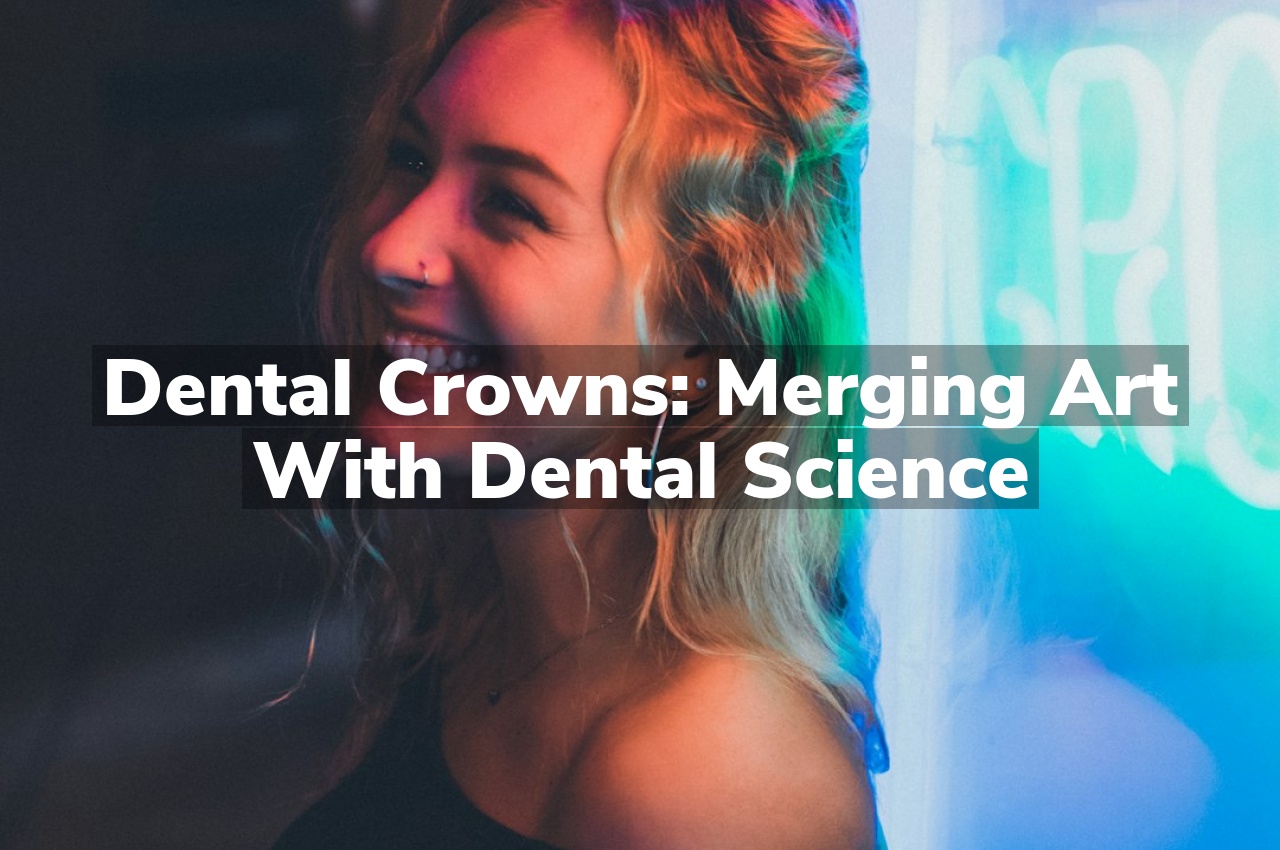Have you ever wondered how dental crowns blend the precision of science with the beauty of art? Dental crowns stand at the crossroads of dental science and artistic craftsmanship, restoring both function and aesthetics to damaged teeth through a process that marries technical skill with creative design. This unique fusion ensures that each crown is not only a testament to dental health but also to the personalized care and artistry embedded in modern dentistry.
Understanding Dental Crown Materials
Dental crowns stand at the crossroads of art and dental science, serving both aesthetic and functional purposes. The materials used in their creation play a pivotal role in determining their durability, appearance, and compatibility with the human body. Traditionally, materials ranged from gold and other metals to porcelain and ceramic, each offering unique benefits. Metals are known for their strength and durability, making them ideal for back teeth where the force of chewing is greatest. On the other hand, porcelain and ceramic crowns offer a color and texture that can closely match natural teeth, making them a preferred choice for front teeth restoration.
The selection of the right material is not just about aesthetics or functionality; it’s about precision in crafting a solution that fits perfectly with the patient’s existing dental structure. This precision ensures not only the longevity of the crown but also the health of the surrounding teeth and gums. For a deeper understanding of why this precision is critical, consider exploring The Importance of Precision in Dental Crown Creation. This exploration underscores the meticulous process behind each dental crown, highlighting the blend of artistry and scientific insight required to restore smiles effectively.
The Role of Aesthetics in Dentistry
In the realm of dentistry, aesthetics plays a pivotal role, intertwining closely with the functional aspects of dental care to enhance not only a person’s smile but also their overall well-being and confidence. The pursuit of aesthetic dentistry is not merely about achieving a visually pleasing outcome; it is deeply rooted in the science of dental health, where each procedure aims to restore or mimic the natural beauty and functionality of teeth. This harmonious blend of art and science is evident in the meticulous work involved in creating dental crowns, where precision and an eye for detail are paramount.
The aesthetic component of dentistry underscores the importance of a smile that looks as good as it feels, reflecting an individual’s health, happiness, and personality. As dental technologies and materials advance, the ability to provide outcomes that are both durable and visually appealing has significantly improved, making aesthetic dentistry an integral part of modern dental practices. For those seeking to enhance their smile while ensuring their dental health is not compromised, exploring options like Affordable Snohomish Dental Crowns can be a step in the right direction.
Dental Crowns: A Historical Perspective
Dental crowns have long stood at the crossroads of art and dental science, tracing back to ancient civilizations where they were used not only for restorative purposes but also as a symbol of wealth and status. This historical journey of dental crowns from their rudimentary beginnings, crafted from materials like gold, ivory, and even animal teeth, to today’s advanced ceramic and porcelain options, showcases the evolution of dental technology and the enduring importance of dental health through the ages. As we delve into the past, it becomes evident how the development of dental crowns reflects broader changes in medical knowledge, materials science, and cultural values surrounding beauty and well-being.
The Process of Creating Dental Crowns
The journey of creating dental crowns is a fascinating blend of artistry and dental science. Initially, a dentist assesses the damaged tooth to determine the suitability of a crown. Following this, an impression of the tooth is taken, which serves as a blueprint for crafting the crown. This model ensures that the final crown fits seamlessly with the patient’s natural teeth, both in shape and color. The creation of the crown involves meticulous work, often using materials like porcelain or ceramic, known for their durability and aesthetic appeal. Once crafted, the crown is carefully placed over the tooth, restoring its appearance and functionality. This process not only highlights the technical expertise required but also the artistic touch that goes into replicating the natural look of teeth. For those seeking expert care in this field, Pilchuck Family Dentistry stands out as a reputable Snohomish Dentist.
Innovations in Dental Crown Technology
The realm of dental crowns has witnessed significant advancements, merging the precision of dental science with the creativity of artistry. Innovations in dental crown technology have revolutionized the way dental professionals approach restorations, enhancing both the functionality and aesthetic appeal of dental crowns. These technological advancements have led to the development of materials that closely mimic the natural appearance of teeth, while also providing superior strength and durability. Furthermore, cutting-edge techniques in the design and fabrication of dental crowns have streamlined the process, ensuring a more accurate and comfortable fit for patients. As a result, the latest innovations in dental crown technology are setting new standards in dental care, promising improved outcomes for individuals seeking restorative treatments.
Conclusion
For more insights, read reviews on Google Maps or call us at 360-568-1198.
